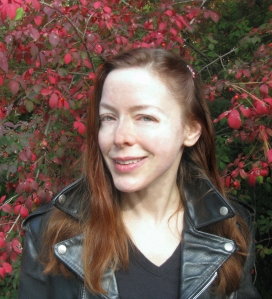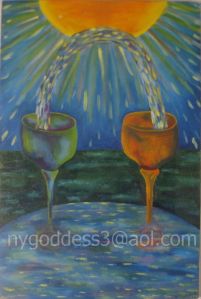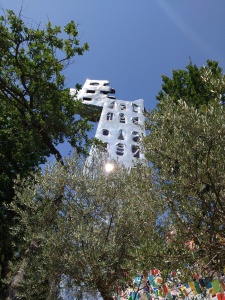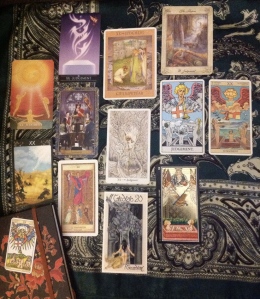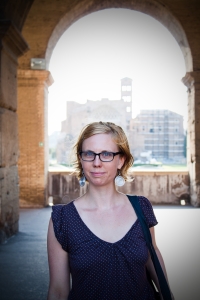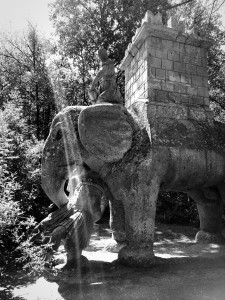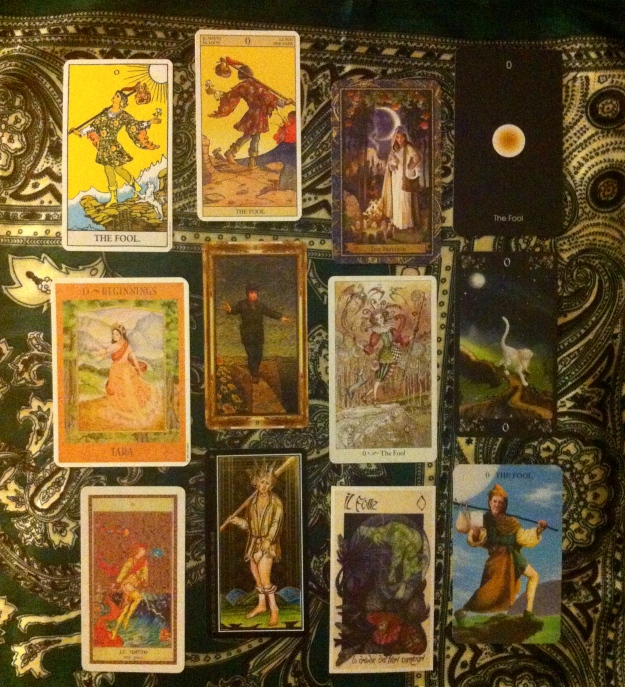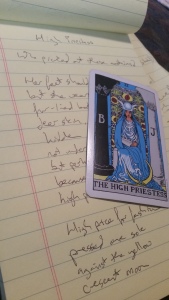 I fell in love with Alison Stone’s poetry in early 2014, when she submitted three pieces for inclusion in Arcana: the Tarot Poetry Anthology. In August of 2016—one year after Arcana’s release—Stone’s book of 78 Tarot poems, Ordinary Magic, was published by NYQ Books. I am delighted to recommend her collection to lovers of Tarot, myth, and language.
I fell in love with Alison Stone’s poetry in early 2014, when she submitted three pieces for inclusion in Arcana: the Tarot Poetry Anthology. In August of 2016—one year after Arcana’s release—Stone’s book of 78 Tarot poems, Ordinary Magic, was published by NYQ Books. I am delighted to recommend her collection to lovers of Tarot, myth, and language.
Each card of the Tarot deck is represented poetically in Ordinary Magic, and the book is split into five sections: the Major Arcana and the four suits of the Minor Arcana (Wands, Swords, Cups, and Pentacles). Stone’s poetic renderings—essentially one-card readings in verse—give the reader a deeper understanding of each card, which makes her book a wonderful resource for novice and experienced cartomancers alike.
In the Major Arcana section, archetypes and symbols are given voices, become the “I” of their respective poems. The Empress is embodied with sensuous details; she says the “languid sun / honeys my skin” and “fingering / the pearls and planets draped / around my neck, I recline.” The Charioteer speaks: “I am a language without adjectives, a diamond / in the setting of itself.” The reader hears a confession of the High Priest, as well as the voice of the coiled snake in the Lovers card and the voice of the Tower itself.
Stone utilizes both free verse and formal structures throughout Ordinary Magic. For instance, her use of the ouroboros-like pantoum form beautifully reflects the Wheel of Fortune’s peripeteia, and the entire Major Arcana section comes full circle to include the same line—“zero is an egg that holds all numbers”—in the first poem (“0. The Fool”) and last poem (“XXI. The World”).
In the Minor Arcana section, mythical stories are cast alongside memories. One example is the story of a retired Hercules as the King of Wands placed a few card-poems away from a story about the narrator’s brother in the Ten of Wands. This juxtaposition shows how a reader can draw meaning from both modern and mythical storytelling; many experienced Tarot readers categorize quotidian stories as cards (“well, that was a Ten of Wands kind of day,” a Tarotist might say). Stone explicitly writes about this connection in her Six of Cups poems, titled “6. Missing”:
Memory’s turned you
mythic. The only one
to find the lake and show how wind
makes one rock’s ripples infinite.
This connection is also found in the theme of matrilineal bonds, which is threaded throughout the Minor Arcana poems. Lilith and her daughter appearing as the Queen of Pentacles and the Queen of Wands, respectively, are juxtaposed with the narrator’s daughter, mother, and grandmother appearing in poems about the Queen of Swords, Nine of Swords, Seven of Wands, and Four of Wands. The title of the latter, “Tether,” speaks to how the women are bound together, and Stone uses umbilical cord imagery to tie the metaphorical with a literal maternal link. She expands on this theme in her Nine of Pentacles poem, “My Mother Graduates from ‘Model Mugging’”:
I am back in childhood, the same person
as my mother, one woman
with two names.
In addition to storge (familial love), eros (romantic love) flows throughout the book, although this love is often fraught. When the Ten of Cups turns up in the poem titled “Tenth Anniversary,” love between the narrator and her husband “crouched just out of reach.” In the aforementioned Six of Cups poem and the poem about the Six of Pentacles (“First Pomegranate”), the narrator speaks of queer love, saying she “always thought” she “didn’t fancy women” but “no one is that heterosexual…your voice, your hair. / My hunger.”
In the non-mythic or modern-as-mythic poems, the narrator is a mature woman, aged “Forty-Seven” in the Four of Cups, who saw “Divorce Court” in the Three of Swords, and has lost her 92-year-old grandmother as well as her much younger mother. This is a welcome and uncommon narrator; we need more stories from women who are no longer twentysomethings, because the media is oversaturated and obsessed with women in their twenties.
Ordinary Magic is a beautiful collection of spiritual poems that are both lyric and narrative, just like the Tarot. If you are looking for a unique gift for the winter holidays, you can pick up Alison Stone’s book at Small Press Distribution.
Also, you can hear her read Tarot poems that appear in both Ordinary Magic and Arcana: the Tarot Poetry Anthology in the Listening Corner, and read more about Stone in her Featured Poet blog post and on her website.

